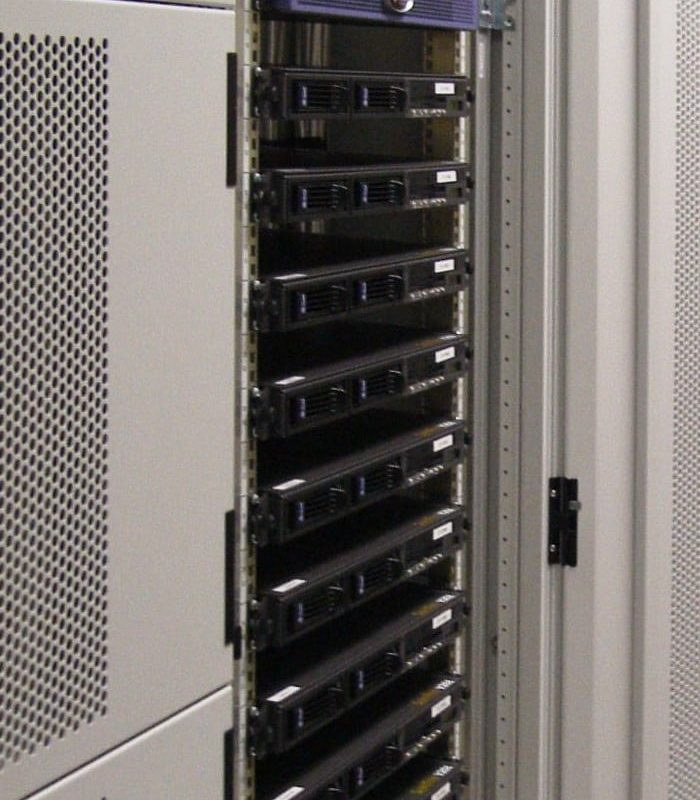NETWORK SOLUTIONS
NETWORK SOLUTIONS
Silver Ridge offer a wide range of products and solutions to help optimise your business operations. Our complete list changes all the time; fill out an ENQUIRIES FORM for more information.
Silver Ridge offer a wide range of products and solutions to help optimise your business operations. Our complete list changes all the time; fill out an ENQUIRIES FORM for more information.
Select from the menu below to jump to a section.
NETWORK SECURITY
Network security is the term given to a multitude of technologies, devices and processes deployed to prevent, detect and monitor computer networks. These solutions aim to protect the integrity, confidentiality and availability of computer networks using both software and hardware technologies.
Modern network architecture is complex and faces and ever-changing threat environment. Attackers are always seeking ways to find and exploit vulnerabilities in systems that will grant them a foothold in your operation. These vulnerabilities can exist anywhere in devices, data, applications and even end users.
Network security is formally conceptualised as a layered process; each solution added to a network offering an additional layer of protection. This idea is somewhat outdated, with modern network security more akin to a row of shields; only one exploitation or misconfiguration is needed for attackers to gain access to your network. Deploying your own solution can be difficult, which is why Silver Ridge have partnered with some of the top names in the business to deliver bespoke security solutions tailored to your organisation’s needs.

Network security is the term given to a multitude of technologies, devices and processes deployed to prevent, detect and monitor computer networks. These solutions aim to protect the integrity, confidentiality and availability of computer networks using both software and hardware technologies.
Modern network architecture is complex and faces and ever-changing threat environment. Attackers are always seeking ways to find and exploit vulnerabilities in systems that will grant them a foothold in your operation. These vulnerabilities can exist anywhere in devices, data, applications and even end users.

Network security is formally conceptualised as a layered process; each solution added to a network offering an additional layer of protection. This idea is somewhat outdated, with modern network security more akin to a row of shields; only one exploitation or misconfiguration is needed for attackers to gain access to your network. Deploying your own solution can be difficult, which is why Silver Ridge have partnered with some of the top names in the business to deliver bespoke security solutions tailored to your organisation’s needs.
NETWORK DEVICES

Computer networks have become such a part of everyday life that most people take them for granted. Without wide availability of modern data communication and technologies, modern life would be very different. The rise of The Internet of Things has brought even more devices into an already crowded marketplace, adding a further degree of complexity for the engineers and architects responsible for configuring and installing networks.

Computer networks have become such a part of everyday life that most people take them for granted. Without wide availability of modern data communication and technologies, modern life would be very different. The rise of The Internet of Things has brought even more devices into an already crowded marketplace, adding a further degree of complexity for the engineers and architects responsible for configuring and installing networks.
NETWORK MONITORING SYSTEMS
Network monitoring systems constantly analyse the traffic flowing across a network, reporting abnormalities, bottlenecks, failed routing components and other issues that may impact the availability of data services for network users. Network devices form the backbone for data delivery across any organisation and it is vital to take a proactive approach to corrective action, minimising downtime and costly delays in data delivery.

NETWORK MONITORING SYSTEMS

Network monitoring systems constantly analyse the traffic flowing across a network, reporting abnormalities, bottlenecks, failed routing components and other issues that may impact the availability of data services for network users. Network devices form the backbone for data delivery across any organisation and it is vital to take a proactive approach to corrective action, minimising downtime and costly delays in data delivery.
LOAD BALANCING

Load balancing solutions provide efficient distribution of incoming network traffic across a group of back-end servers. Modern high-traffic websites must serve thousands, if not millions, of concurrent requests from users/clients and return the correct text/images/video/application data, all in a fast and reliable manner.
To cost-effectively scale to meet these demands, modern computing best practices generally recommend adding more servers. The load balancing solution acts as a routing agent, distributing incoming client requests evenly across the servers to best utilise the full capacity of the hardware and ensure no one server is overworked. Loads are fragmented based on a set of predefined metrics, such as geographic location or number of concurrent requests. This helps ensure high data availability and reliability. The ability to add/remove servers as demand requires is another scalability feature made possible by load balancing.
Load balancing solutions provide efficient distribution of incoming network traffic across a group of back-end servers. Modern high-traffic websites must serve thousands, if not millions, of concurrent requests from users/clients and return the correct text/images/ video/application data in a fast and reliable manner.

To cost-effectively scale to meet these demands, modern computing best practices generally recommend adding more servers. The load balancing solution acts as a routing agent, distributing incoming client requests evenly across the servers to best utilise the full capacity of the hardware and ensure no one server is overworked. Loads are fragmented based on a set of predefined metrics, such as geographic location or number of concurrent requests. This helps ensure high data availability and reliability. The ability to add/remove servers as demand requires is another scalability feature made possible by load balancing.
WAN OPTIMISATION
WAN Optimisation solutions are technologies and techniques used to maximise the efficiency of data flow across a Wide Area Network (WAN), such as the connectivity between an organisation’s centralised data centre and it’s remote locations. Enterprise WAN use these solutions to increase the speed with which end users access business-critical applications and information, improving issues with network latency, minimising packet loss and mitigating capacity limitations.
WAN optimisation tools have been around since the early days of Wide Area Networking, when bandwidth requirements first started to exceed availability. At the time connectivity options were limited, with organisations often turning to expensive Multi-protocol Label Switching solutions to connect branch offices to datacentres. By focusing on optimising the WAN, network managers are able to achieve more efficient use of their bandwidth, improving application performance without dramatically increasing costs.

WAN Optimisation solutions are technologies and techniques used to maximise the efficiency of data flow across a Wide Area Network (WAN), such as the connectivity between an organisation’s centralised data centre and it’s remote locations. Enterprise WAN use these solutions to increase the speed with which end users access business-critical applications and information, improving issues with network latency, minimising packet loss and mitigating capacity limitations.

WAN optimisation tools have been around since the early days of Wide Area Networking, when bandwidth requirements first started to exceed availability. At the time connectivity options were limited, with organisations often turning to expensive Multi-protocol Label Switching solutions to connect branch offices to datacentres. By focusing on optimising the WAN, network managers are able to achieve more efficient use of their bandwidth, improving application performance without dramatically increasing costs.
PABX & UNIFIED COMMUNICATIONS

Private Automated Branch Exchange (PABX) technology is deployed to allow a single access number to provide several lines to outside callers while providing a range of external lines to internal staff. PABX takes care of all the switching required for making internal calls within an organisation and provides a connection between internal extensions and external phone lines. The switchboards enable the use of several communication devices: telephones, faxes, answering machines and automated enquiry systems.
Unified Communications offer a complimentary solution to traditional phone systems; communication through a single application or service that can make use of a combination of instant messaging, email, faxing, data sharing, VoIP and video collaboration from the same User Interface. Having a single platform for all communication services helps organisations track use and manage cost more efficiently, empowering staff to take advantage of the unified experience and increase productivity.
Private Automated Branch Exchange (PABX) technology is deployed to allow a single access number to provide several lines to outside callers while providing a range of external lines to internal staff. PABX takes care of all the switching required for making internal calls within an organisation and provides a connection between internal extensions and external phone lines. The switchboards enable the use of several communication devices: telephones, faxes, answering machines and automated enquiry systems.

Unified Communications offer a complimentary solution to traditional phone systems; communication through a single application or service that can make use of a combination of instant messaging, email, faxing, data sharing, VoIP and video collaboration from the same User Interface. Having a single platform for all communication services helps organisations track use and manage cost more efficiently, empowering staff to take advantage of the unified experience and increase productivity.
ENDPOINT & SERVER PROTECTION
Protecting critical resources is an important aspect of an organisation’s security posture. With more threat types automated every day, always-on infrastructure can be under a constant barrage of attacks- only one of which needs to succeed to produce disastrous consequences.
Endpoint security is usually what people think of when protecting a network; it reflects measures they may take with personal devices or their own networks at home. Having an antivirus solution present on end-user devices is a requirement of most companies, but is not in itself enough to protect the network. Modern endpoint solutions will operate proactively, attempting to block threats before they arrive on a system using a variety of detection techniques. Some will send unknown files for analysis on a cloud-based system before permitting them to make changes on an end point, while others rely on virus signature databases updated every hour.
Data Server protection has risen as threats have evolved to target critical operation points within organisations, either to encrypt data and hold to ransom or to gradually extract confidential/personal information over time. Malware development is big business, with criminal organisations seeking access to any server data to be sold on the dark web. All organisation’s should invest in adequately protecting their assets in the face of more advanced attack techniques.

Protecting critical resources is an important aspect of an organisation’s security posture. With more threat types automated every day, always-on infrastructure can be under a constant barrage of attacks- only one of which needs to succeed to produce disastrous consequences.
Endpoint security is usually what people think of when protecting a network; it reflects measures they may take with personal devices or their own networks at home. Having an antivirus solution present on end-user devices is a requirement of most companies, but is not in itself enough to protect the network. Modern endpoint solutions will operate proactively, attempting to block threats before they arrive on a system using a variety of detection techniques. Some will send unknown files for analysis on a cloud-based system before permitting them to make changes on an end point, while others rely on virus signature databases updated every hour.

Data Server protection has risen as threats have evolved to target critical operation points within organisations, either to encrypt data and hold to ransom or to gradually extract confidential/personal information over time. Malware development is big business, with criminal organisations seeking access to any server data to be sold on the dark web. All organisation’s should invest in adequately protecting their assets in the face of more advanced attack techniques.